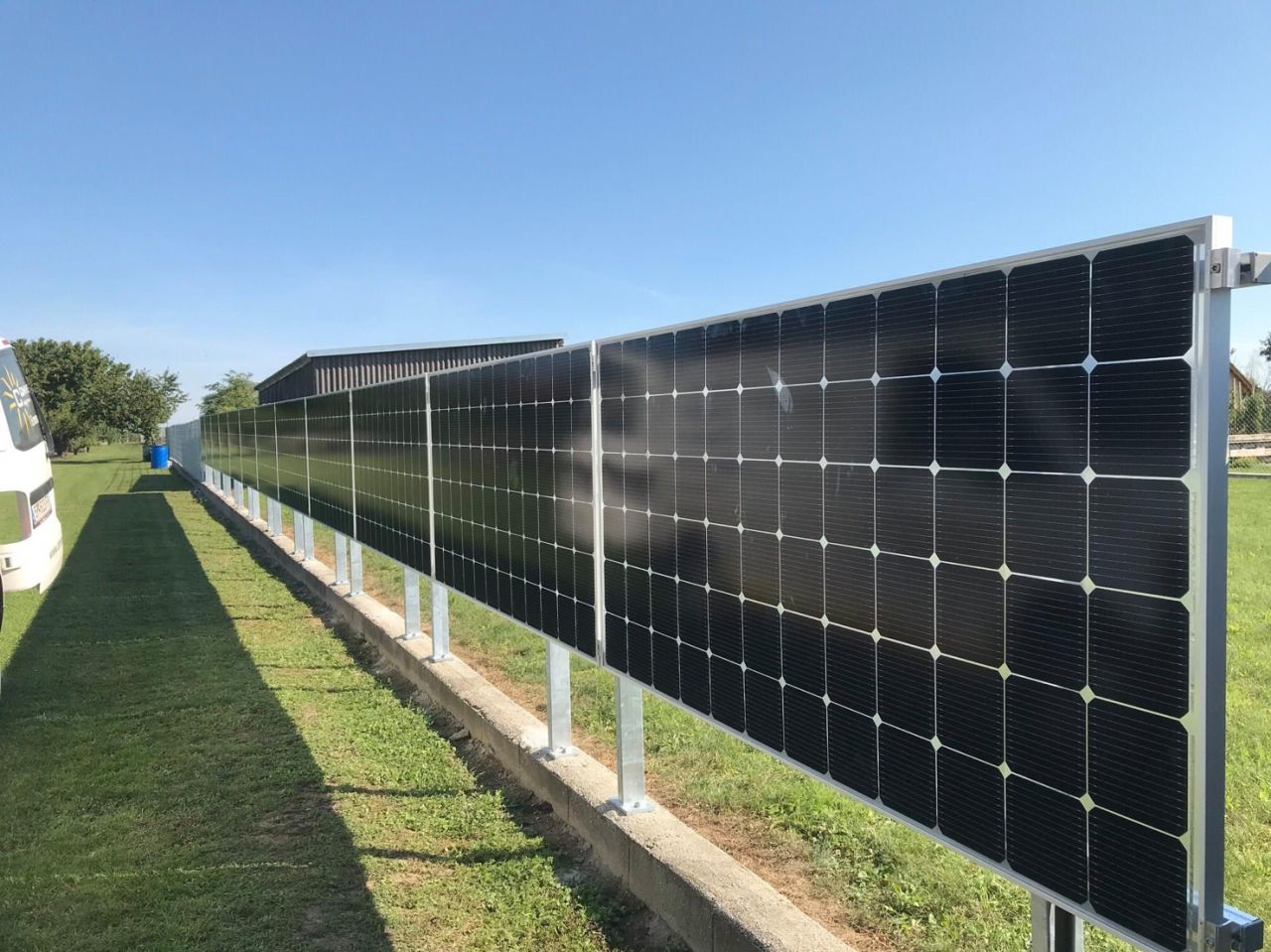Published on 26 March 2024
Bifacial photovoltaic panels

What are bifacial solar panels?
Bifacial solar panels are an innovative solar technology that allows energy to be absorbed from both sides of the photovoltaic cell, increasing energy production compared to standard solar modules. These panels are particularly suitable for ground-mounted systems, railings, and solar canopies.
The production increase from bifacial panels typically falls within the 5-30% range and depends mainly on three factors:
distance between the panel and the ground;
tilt angle of the panel;
albedo of the ground or underlying surface.
The distance from the ground affects the panel's yield because effective light reflection capture requires open space between the ground and the back of the panel.
This is why installing a bifacial panel flush against a house roof makes little sense: there wouldn’t be enough space underneath for meaningful reflectance.
The ideal tilt angle to ensure good rear-side reflectance is 25°—a setup possible only when bifacial panels are installed on flat surfaces or on the ground.
Albedo is the unit of measurement that indicates the reflective capacity of an object or surface. It’s usually expressed as a value from 0 to 1, depending on the case. For example:
Snow and ice have a high reflectivity, with an Albedo Factor of 0.75;
Light-colored building surfaces (e.g., bricks or light paint) can reach up to 0.6;
Dark-colored building surfaces (e.g., dark bricks or paint) have a much lower value, around 0.27.
Would you like to purchase photovoltaic panels?
Search for used panelsHow are bifacial panels made?
Bifacial solar panels are made with double-sided crystalline silicon cells, which exploit exposure on both sides to generate more energy. This technology leads to higher system efficiency, offering an energy production increase of 10–30% compared to traditional panels.
How much does a bifacial solar panel cost?
The cost of a bifacial photovoltaic panel can vary depending on the manufacturer and technical specifications, but it is generally slightly higher than a standard panel. However, the advantages of bifacial panels include greater long-term durability and higher energy production thanks to their ability to absorb sunlight from both sides of the cell.
The production from the rear side of the bifacial cell will be greater when:
the surface on which the module is installed is reflective;
the tilt angle or the height from the surface is greater;
shading on the rear side of the PV generator can be avoided (caused, for example, by structural components such as mounting rails).
The best surfaces for installing a bifacial PV system are light-colored concrete, white membrane, or surfaces covered with light gravel, which can reflect up to 80% of the incident light.
The advantages of bifacial solar panels
Bifacial photovoltaic panels are particularly effective in scenarios such as large-scale ground-mounted photovoltaic systems, commercial rooftop systems, and parking lot canopies. These panels make the most of reflected sunlight, increasing the overall efficiency of solar energy collection in environments with high ground reflectivity conditions.
Can they be used in case of revamping?
At the same time, there’s good news regarding revamping. Until last year, there was still a lot of uncertainty about whether bifacial modules could be installed as replacements for panels incentivized under the Conto Energia scheme. But last April, the GSE provided some clarifications: for maintenance and modernization works carried out on photovoltaic systems incentivized under Conto Energia, it is possible to use bifacial modules.
In addition, the GSE clarified what will happen in the event of a new CEI regulation that sets rules for the power output of bifacial photovoltaic modules in systems already approved or incentivized. The operator explains that the use of bifacial modules is allowed, and any new regulation on power determination will not be a reason for excluding systems from incentives.
In conclusion, according to a study by the IEA, in 2020 bifacial modules covered a 12% market share, a figure that could rise to 30% by 2030. According to Bloomberg's forecasts, however, by 2025 bifacial panels will account for 40% of the newly installed annual power capacity.
Would you like to purchase photovoltaic panels?
Search for used panels